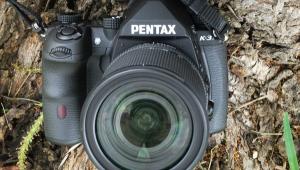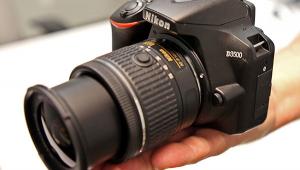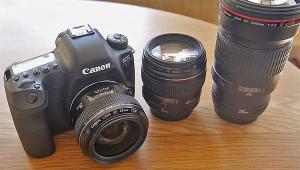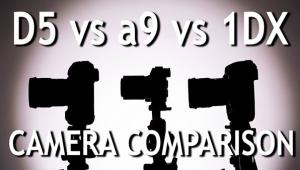Pentax KP DSLR Review
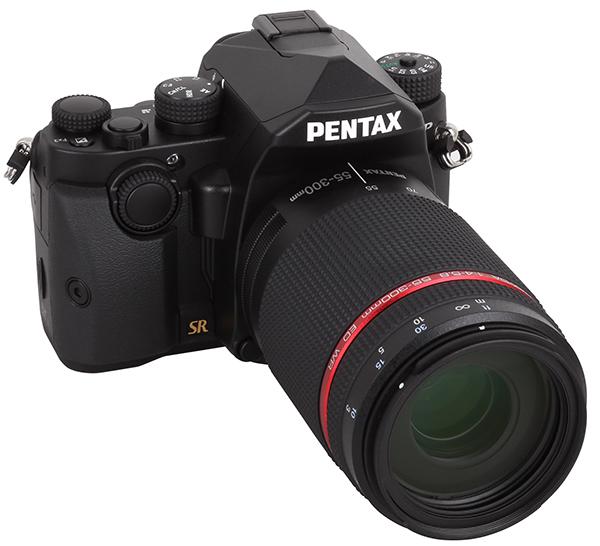
(Editor’s Note: Lab Review lab tests and comments are supplied by BetterNet, Shutterbug’s TIPA-affiliated testing lab and edited by George Schaub. TIPA is a worldwide association of photo and imaging magazines.)
The new Pentax KP is a compact and rugged DSLR system packed with a lot of advanced features. It’s fitted with a 24MP APS-C-sized sensor without a low-pass filter.
The Pentax KP DSLR uses a single SD card slot to store images and videos on SD/SDHC/SDXC cards. The tough body of the camera is weather-sealed and dustproof. All of the interfaces on the Pentax KP are covered by thick rubber caps, while the hatch for the SD card slot has a very thick rubber seal to prevent the intrusion of dust and water.
Features, Build & Handling
The Pentax KP offers numerous and sometimes unusual features for a DSLR. With its movable sensor it can use a “low-pass filter simulation” to prevent moiré effects even though the camera sensor lacks a low-pass filter. In addition, this sensor system can be used for a “pixel shift” image series.
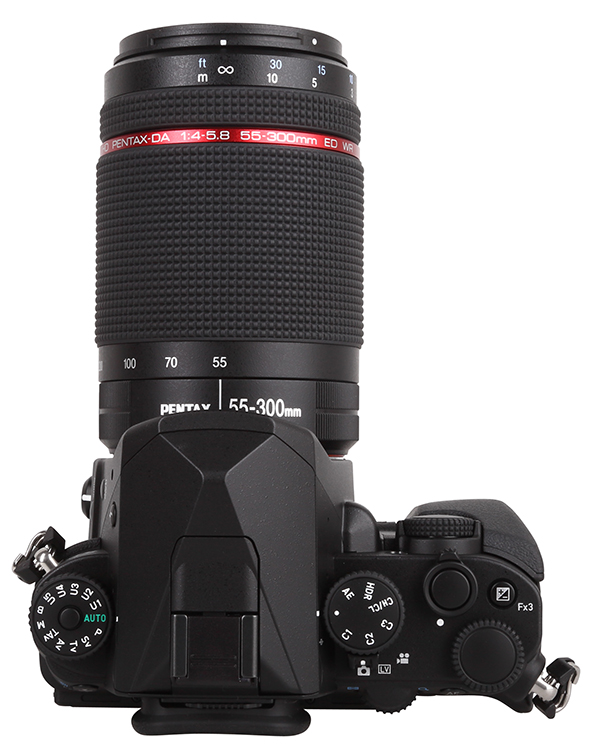
In this mode the Pentax KP takes a series of images and generates a single image from the series. (In contrast, some Olympus cameras use this technology to create images with higher image resolution; the Pentax KP uses “pixel shift” to create a higher “color resolution” because all three RGB signals are captured for every single pixel.)

A third function based on the Pentax KP’s moving sensor is an automatic alignment of the image to create photos with a perfect horizon line: in this scenario, gyro sensors work with the electronic level system to rotate the image automatically into perfect position. The last function using the moving sensor is Pentax’s unique “Astrotracer,” which allows photographers to shoot sky images at night with the bulb/time exposure that records bright star dots rather than “star streaks.” For this function the camera needs to use GPS information that is provided by the optional “O-GPS1” GPS module.
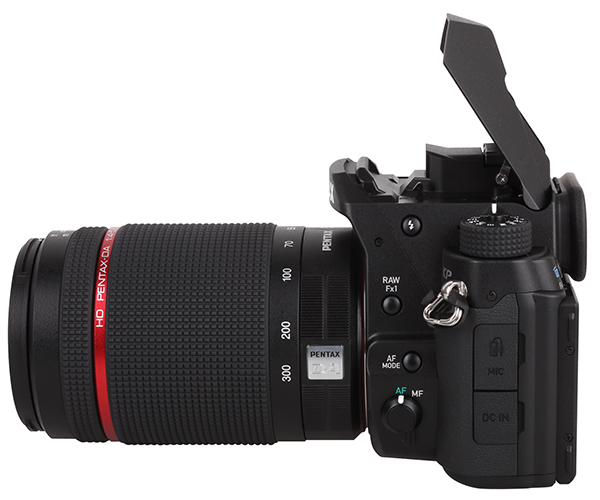
The Pentax KP offers a special “Raw” button on the left-hand side of the body (near the lens mount) that allows the user to quickly switch into Raw photography even while working in JPEG mode. The Raw button is one of three “Fx” buttons, all of which are user defined via the menu.As usual for a Pentax system, the new camera also offers two file formats for Raw photography. It can use the Pentax PEF format or the Adobe DNG format, a sort of de facto standard that can be converted in numerous editing programs.
The Pentax KP has a lot of function buttons and setup wheels. The first dial is located on the front and is directly accessible with the forefinger of the right hand. The second parameter dial is located on the back and is accessible by the thumb of the right hand.
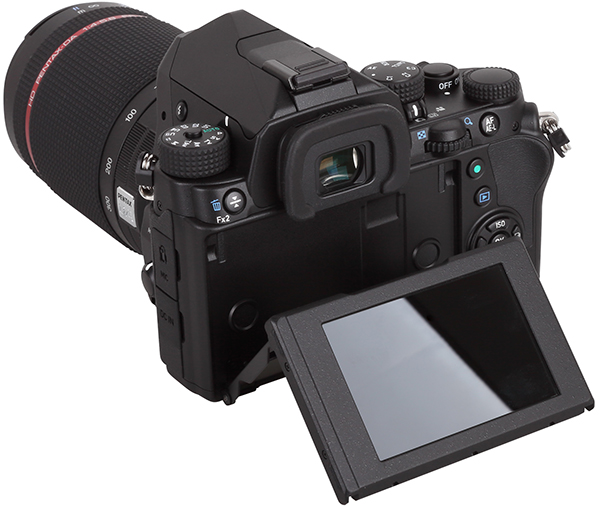
The Pentax KP has an additional dial on the top, used to change the parameters of the special function dial, which is located directly next to the viewfinder. Below this special function dial the camera has a small lever to change between the standard DSLR viewfinder mode, live preview mode on the LCD screen, and video recording mode.
The Pentax KP features a swivel LCD: it isn’t fully articulated but can be flipped upward (90 degrees) and downward (45 degrees). This is a sophisticated and very sturdy swivel mechanism. The LCD screen has 921,000 RGB dots, which is a bit low even for this DSLR class. Although the electronic viewfinder/LCD is a little disappointing, the optical viewfinder is very large and bright (for an APS-C system). This viewfinder shows a lot of additional features and offers a 100 percent field of view.
The Pentax KP offers a Wi-Fi module for image data transfer to smartphones or remote control by a mobile device. Pentax has free apps for Android and Apple iOS. The software on the mobile device shows live previews on the screen and is able to control numerous image parameters.
Comments on Image Quality
Color: The automatic white balance system of the Pentax KP worked very well. All gray patterns are nearly perfect and are located in the center of our result chart. The average saturation is very high—111.3 percent—but this result is based on the dark blue nuances that are extremely boosted and shifted into the magenta area. Most other colors show only average shifts from their given values. The bright skin tones are reproduced nearly perfectly, while darker skin tones show a shift into the darker orange area.

Sharpness: The Pentax KP showed some disappointing results in our resolution tests. The ISO 12.233 chart was reproduced with 3,048 of 4,000 lines per picture height, even though the camera uses image enhancement algorithms that cause “overshot effects” of nearly 18 percent. Images have a slightly softer look than usual. Some contrast lines on the ISO 12.233 chart show halos and double contours.
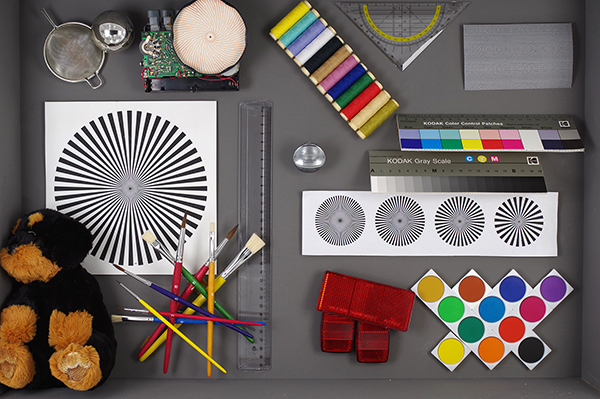
Noise: Up to ISO 51,200 mode, the Pentax KP works very well and reproduces all scenes with an acceptable level of luminance and color noise—at least when compared to most other APS-C systems. Higher ISO speed modes, especially ISO 409,600 and ISO 819,200, show extreme results because of the combination of very high noise levels and very intense anti-noise filtering. Images taken in both modes aren’t usable. In our opinion Pentax should have used a lower ISO speed (therefore gain limit) like ISO 25,600 as the maximum mode in standard settings and perhaps ISO 102,400 as a maximum for additional high modes.

The Pentax KP performed excellently in our dynamic range tests. The Stouffer 4110 chart was reproduced with a maximum of 11.1 f/stops. The camera shows a high level of dynamic range even in higher ISO speed settings. Up to ISO 6400 the dynamic range results run between 10 to 11 f/stops.
Comments on Video Functions
The new Pentax DSLR offers video recording with Full HD resolution. The camera records video clips as MOV files (Apple QuickTime) with H.264 compression. Besides its Full HD modes, it offers HD modes (1280x720 pixels). Pentax also mentions a “4K” mode for videos, but this mode is the interval (“time lapse”) shooting mode.
The Pentax KP is able to record up to 30 full frames per second (fps). Besides this maximum and NTSC-compatible frame rate, it also offers a PAL-compatible mode with 25 fps and a “cine” mode with 24 fps. In addition, it offers interlaced frame modes like 60i and 50i, but these modes do not really make sense on high-resolution LCDs without interlaced frame reproduction.
To start video recording the photographer has to switch the lever on the top into its “video mode” position. In addition to its normal “live preview” mode this “video mode” sets the electronic viewfinder to an aspect ratio of 16:9 and activates video recording when the photographer presses the normal shutter release button (the camera doesn’t have an additional video recording button so the photographer can’t record video clips while working in photo mode).
The Pentax KP allows use of manual exposure settings in video mode. The ISO speed setting can be used in manual video mode and offers a setting between ISO 100 and ISO 25,600. Sound level can be adjusted and the camera offers a microphone jack for use of an external microphone for better sound quality.
Comments on Video Quality
In video mode, the Pentax KP showed similar results to its results in photo mode. The resolution result is a little disappointing (only 649 of 1,080 lines per picture height) and therefore most clips have a really smooth and nearly unsharp look. Where most other DSLRs or mirrorless cameras—whether working in 1080 or 4K mode—show a lot of details in all elements of challenging scenes (tiled roofs, for example), the Pentax KP shows nearly homogeneously filled color areas.
Like in photo mode the automatic white balance system did a very good job. All gray color patches are located in the center of our result chart. Some nuances of dark blue colors are reproduced with very high saturation, while most other color errors are on a low level. The noise results of the new Pentax KP in video mode are excellent. Due to its very soft and “smoothed” reproduction the noise level is very low. But dynamic range results are disappointing in video mode. The camera reproduced all scenes with very hard contrast. When reproducing the Stouffer 4110 chart, the maximum dynamic range was 9.8 f/stops, but at most higher ISO speeds the dynamic range results are significantly lower.
The Pentax KP (body only) has a list price of $1,099. For more information, visit us.ricoh-imaging.com.
Scorecard
Pros
+ Easy handling and a lot of (sometimes unusual) features
+ Large and bright optical viewfinder with 100 percent field of view
+ Very compact and robust camera body
+ Weatherproof, dustproof
Cons
- Disappointing result in resolution test
- Heavy for a compact DSLR
- Somewhat low resolution on LCD screen
- No 4K video recording
(Lab Review is where we publish web-exclusive lab reports on cameras. To read more Lab Reviews, click on the Reviews tab on the top navigation bar of this page. New photo gear reports are published frequently, so check Reviews for more equipment evaluations from Shutterbug writers.)
- Log in or register to post comments


